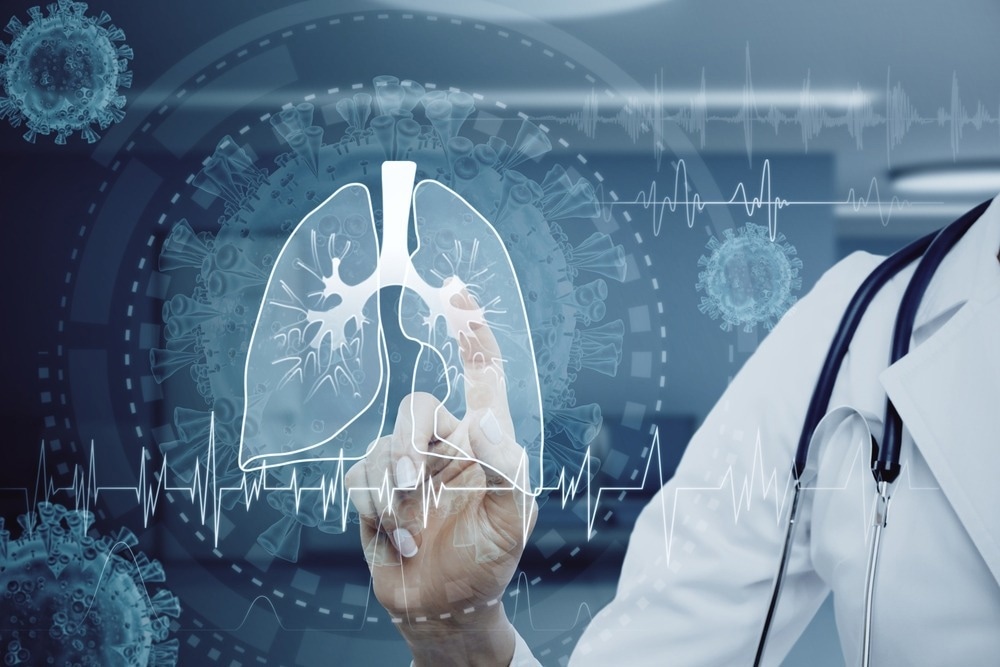In a recent study posted to the bioRxiv* preprint server, researchers discuss the role of a surfactant-mediated inflammatory response employed by human lungs against the severe acute respiratory syndrome coronavirus 2 (SARS-CoV-2).
 Study: The lung employs an intrinsic surfactant-mediated inflammatory response for viral defense. Image Credit: Golden Dayz/Shutterstock
Study: The lung employs an intrinsic surfactant-mediated inflammatory response for viral defense. Image Credit: Golden Dayz/Shutterstock

 *Important notice: bioRxiv publishes preliminary scientific reports that are not peer-reviewed and, therefore, should not be regarded as conclusive, guide clinical practice/health-related behavior, or treated as established information.
*Important notice: bioRxiv publishes preliminary scientific reports that are not peer-reviewed and, therefore, should not be regarded as conclusive, guide clinical practice/health-related behavior, or treated as established information.
What are lung surfactants?
Recent studies have reported the reduced expression of the lung surfactant protein (SP) gene in coronavirus disease 2019 (COVID-19)-associated acute respiratory distress syndrome (CARDS)-affected patients.
Surfactants are compounds that are released by pulmonary alveolar type 2 (AT2) cells to assist in gas exchange, as well as by club cells for maintaining fluid levels in the airway epithelial lining. Notably, exogenous pulmonary surfactants have been recommended as a treatment for the restoration of lung function after COVID-19.
About the study
In the present study, researchers evaluate the response of human lungs to SARS-CoV-2 infection using a novel in vitro system that replicates the development and three-dimensional (3D) cytoarchitecture of several lung cell types.
The team utilized a technique that allowed the mapping of proteomic, transcriptional, and functional responses exhibited by the human pulmonary mesenchymal and epithelial cells of normal lungs upon initial SARS-CoV-2 exposure. This system was generated by employing an optimized patient-specific culture system that comprised functional mesenchymal and epithelial lung components in a three-dimensional cytoarchitecture.
By subjecting human-induced pluripotent stem cells (hiPSCs) to a specific order of inductive factors, lung organoids (LOs) that mimicked normal lung development were generated. The team also created definitive endoderms derived from hiPSCs through nodal signaling and high-dose Activin A. Furthermore, anterior foregut endoderm (AFE) was formed when WNT, bone morphogenetic protein (BMP), and transforming growth factor beta (TGF-ß) signaling were inhibited.
The researchers determined primary and acute SARS-CoV-2 spike protein tropism in the lung model without intercellular spread by infecting LOs using a pseudotyped replication-incompetent vesicular stomatitis virus (VSV), along with green fluorescent protein (GFP)-conjugated SARS-CoV-2 spike protein (pseudovirus-GFP). To validate the infected cell types, acutely dissociated LOs present in the monolayer were stained against basal cells, secretory cells, and mucus cells at 24 hours post-infection (hpi).
To determine the influence of surfactant on a cell's susceptibility to SARS-CoV-2 infection, immunofluorescence was used to detect the four SPs at 24 hpi in the DLOs and WLOs. LOs were also collected from the same hiPSCs, wherein this mutation was corrected by genome editing mediated by clustered regularly interspaced short palindromic repeats (CRISPR).
Study findings
NKX2-1 upregulation was observed in initial lung progenitor cells (LPCs) present in the ventral part of the AFE. The LPCs were divided into three distinct heterogeneous LOs composed of lung cells from the distal or proximal regions of the human lung.
Organoids exposed to DCI matured phenotypically within 24 hpi In addition to alveolar type I (ATI) cells, basal, club, and goblet cells also comprised ATII cells (pro-SPC+) that secreted surfactant anatomically and through protein expression.
Viral nucleocapsid (NC) co-expression with SP-A+, SP-C+, SP-B+, and SP-D+ was also reported. Only infected cells expressed SP-C and SP-D, whereas uninfected and infected bystander cells expressed SP-A and SP-B.
The presence of SP-B was considered a prerequisite for pulmonary surfactant function and gas exchange within the alveoli. SP-B was also crucial for the normal biogenesis of lamellar bodies, which serve as the surfactant storage form, as well as the post-translational modification of SP-C.
SP-B may be elicited by pathogenic viruses and lead to homeostatic, anti-viral, and/or anti-inflammatory functions, as indicated by the detection of SP-B after viral infection in pulmonary cells, especially those that do not ordinarily produce surfactants in vivo to facilitate ventilation. The number of infected cells was greater in SP-B mutant cells than in isogenic corrected cells. Thus, the absence of SP-B likely contributes to SARS-CoV-2 infection resistance, presumably by providing an obstacle in the lungs against viral infection.
Infected SP-B-mutant proximal lung organoids (PLOs) exhibited elevated levels of chemokines such as CCL20 and CXCL-1, -2, -3, -5, and -6, interleukin (IL) transcripts such as IL-1A, IL19, IL1B, and IL23, interferon-inducible genes, as well as other cytokines like CSF3. In contrast to normal PLOs, surfactant-related genes SFTPA2 and NKX2-1 were also upregulated.
Gene set enrichment analysis (GSEA) of the mock PLOs as compared to SP-B-mutant PLOs at 24 hpi were distinguished by activation of pathways related to cytokine receptors, NOD-like receptor signaling, chemokine signaling, MAPK signaling, and Interferon signaling.
Conclusions
The researchers of the current study successfully detected SARS-CoV-2 tropism in a novel in vitro lung model by mapping the anti-SARS-CoV-2 response of pulmonary mesenchymal and epithelial cells. Notably, SP-B offered an essential barrier to viral entry and modulated gene expression induced by SARS-CoV-2 related to intrapulmonary inflammation, which further reduced pathogen survival and spread.

 *Important notice: bioRxiv publishes preliminary scientific reports that are not peer-reviewed and, therefore, should not be regarded as conclusive, guide clinical practice/health-related behavior, or treated as established information.
*Important notice: bioRxiv publishes preliminary scientific reports that are not peer-reviewed and, therefore, should not be regarded as conclusive, guide clinical practice/health-related behavior, or treated as established information.